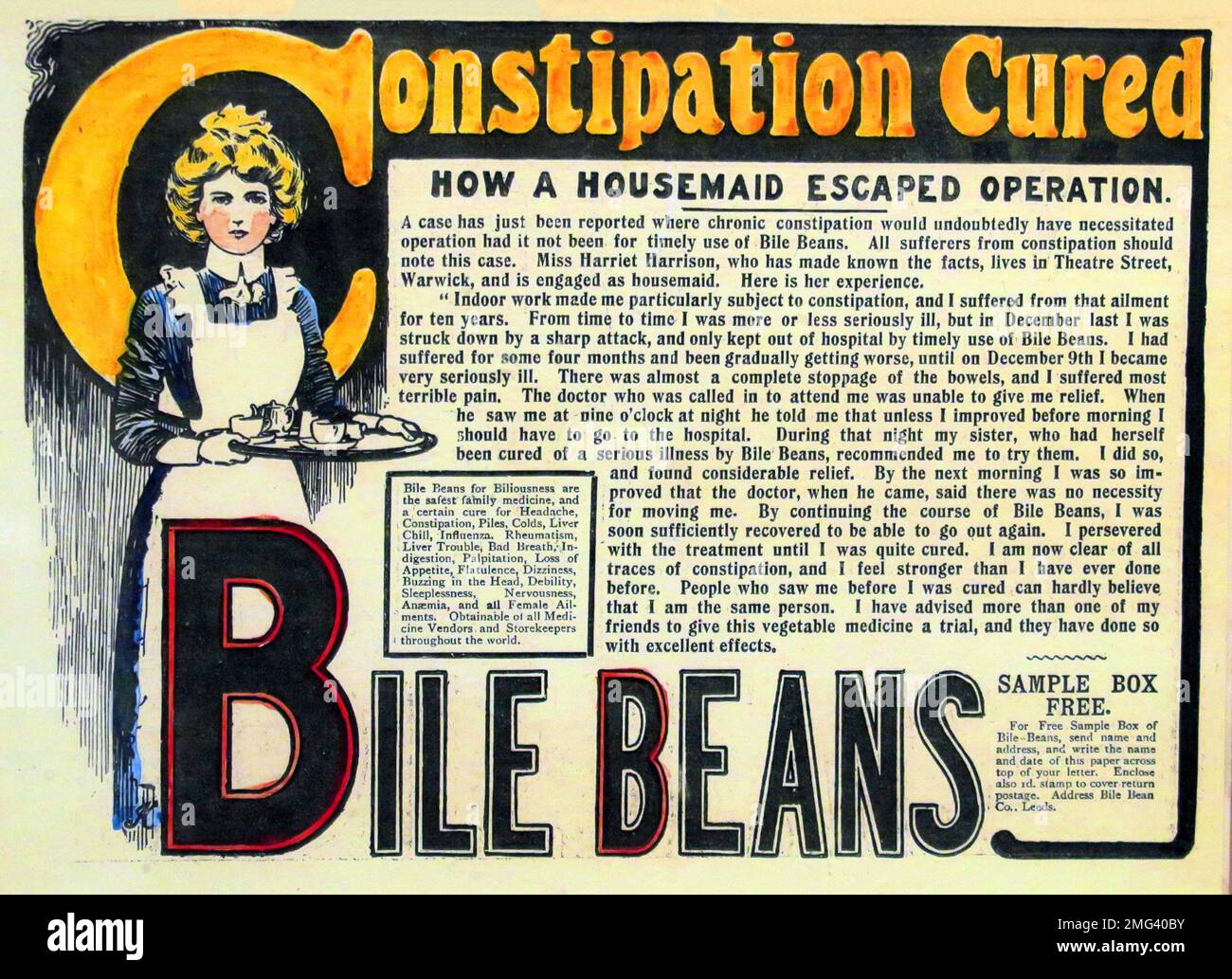Advert for Bile Beans, constipation cured, how a housemaid escaped operation, newspaper article from 1920s

Image details
Contributor:
Tony Smith / Alamy Stock PhotoImage ID:
2MG40BYFile size:
23.6 MB (1.5 MB Compressed download)Releases:
Model - no | Property - noDo I need a release?Dimensions:
3372 x 2448 px | 28.5 x 20.7 cm | 11.2 x 8.2 inches | 300dpiDate taken:
14 September 2019Location:
Yorkshire, England, UKMore information:
Bile Beans was a laxative and tonic first marketed in the 1890s. The product supposedly contained substances extracted from a hitherto unknown vegetable source by a fictitious chemist known as Charles Forde. In the early years Bile Beans were marketed as "Charles Forde's Bile Beans for Biliousness", and sales relied heavily on newspaper advertisements. Among other cure-all claims, Bile Beans promised to "disperse unwanted fat" and "purify and enrich the blood". Although the manufacturer claimed that the formula for Bile Beans was based on a vegetable source known only to Aboriginal Australians, its actual ingredients, which included cascara, rhubarb, liquorice and menthol, were commonly found in pharmacies of the period. A court case initiated in Scotland in 1905 found that the Bile Bean Manufacturing Company's business was based on a fraud and conducted fraudulently, but Bile Beans continued to be sold until the 1980s nevertheless. Formulation and manufacture Charles Edward Fulford (1870–1906) and Ernest Albert Gilbert (1875–1905) first sold Bile Beans in Australia in late 1897, marketed as "Gould's Bile Beans". Fulford was a Canadian who had travelled to Australia to sell Dr. Williams' Pink Pills for Pale People for his uncle, George Taylor Fulford. Fulford and Gilbert established the Bile Bean Manufacturing Company in Leeds, England, in 1899. It was claimed that the formula for Bile Beans was created by an Australian scientist Charles Forde in 1898, based on research he had conducted on a vegetable source known only to Aboriginal Australians. In reality, Charles Forde did not exist; the name was used as an alias for Charles Fulford, who had no scientific training